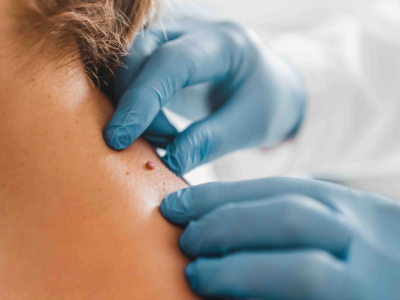A simple mole? Or skin cancer?
Each of us may feel concerned when a new lesion appears on our skin. This concern often increases, especially when family members are involved. What needs to be done is actually simple: it is enough to consult a dermatologist near you.
During the examination, we look for some clues with the help of a special device called a dermatoscope. Some clinics have video dermatoscopes that allow for recordings, making it easier to compare with your follow-up visit a year later.
With the dermatoscope, we use the ABCDE rule to examine nevi, or melanocytic nevi.
A - Asymmetry
B - Border characteristics
C - Colour characteristics
D - Diameter > 0.5 cm
E - Evolution, meaning whether there has been a change or rapid change
These are the basic data we look at during the examination. However, family history, fair skin, having frequent sunburns during childhood, and having more than 50 nevi in total are also among the risk factors.
In summary, it is necessary to have a dermatologist examination at least once a year for all new formations and existing moles. This way, we have the chance to make an early diagnosis and completely remove your dysplastic nevi, sending them for pathology.
Since they are completely removed, the risk of melanoma, or skin cancer, for the existing lesion is eliminated.
As soon as you are diagnosed with dysplastic nevus, an additional risk factor for melanoma is added.
Our follow-up period will be every 6 months.
To avoid anxiety, we should emphasize screening and early diagnosis, as with all cancers. Of course, it is also important to wear wide hats and use sunscreen to protect against all skin cancers triggered by the sun, and to avoid sun exposure during midday hours.





